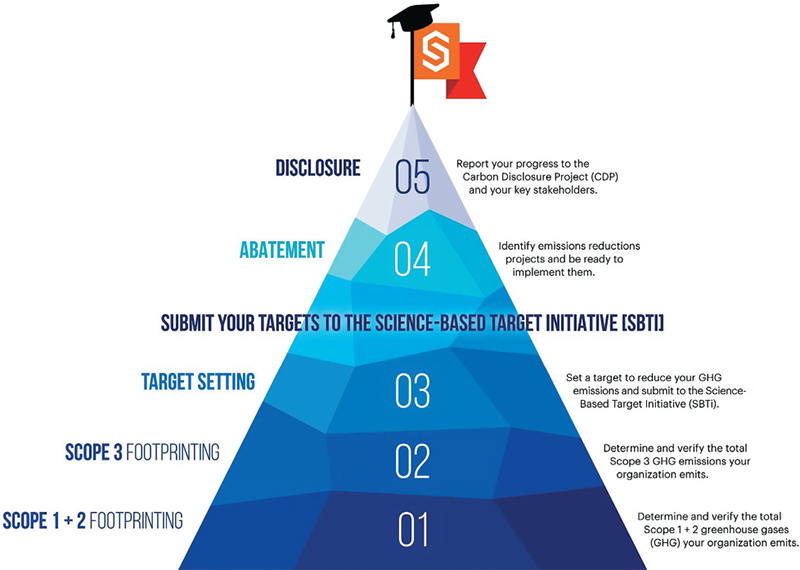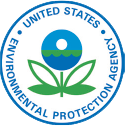Feature
Becoming a Sustainable Business Requires a Sustainable Supply Chain
With looming Securities and Exchange Commission (SEC) regulations as well as the recent spate of wildfires, torrential downpours, excessive heat and other extreme weather events, the need for climate action and sustainability reporting has reached a new level of urgency. Companies of all sizes are increasingly recognizing the importance of measuring their emissions footprint, as well as the need to mitigate the harm it causes not only to the environment, but to their ability to do business.
Sustainability: A New Foundational Pillar for Business Success
Sustainable supply chain operations not only help the environment, they create real business value. Leading firms are embracing sustainability as a new foundational pillar for future success. One key to establishing a sustainable operation is to follow the standards established by the greenhouse gas (GHG) Protocol, which classifies an organization’s emissions across three separate scopes (see sidebar on page 22).
Because the GHG Protocol estimates that as much as 90% of a company’s total emissions occur within Scope 3—a company’s supply chain—this area holds the greatest promise for sustainability improvements. It also means a considerable amount of the data is needed for sustainability reporting, decisionmaking and improvement.
Scope 3 requires collaboration with suppliers and partners up and down the chain. With 15 separate upstream and downstream emissions categories within Scope 3, navigating the accounting process can be a challenging endeavor. It’s also a worthwhile one for reasons that extend beyond the obligation to protect our planet, said Betsy Blaisdell, U.S. director of supply chain decarbonization and commercial sustainability for Guidehouse, a consulting firm that has developed a supplier education and collaboration initiative called Supplier Leadership on Climate Transition, or Supplier LOCT, in which large firms provide training for their supply chain suppliers on their Scope emissions.
“First, by reducing GHG emissions, companies simultaneously reduce their fuel and energy consumption, and also reduce their costs,” she explained. “It’s also a way to become a more resilient company, to identify opportunities for business growth, and to differentiate from competitors, like the early adopters of electric vehicle technology did.”

Additionally, companies that do not make the effort to reduce their environmental footprint expose themselves to a variety of risks, continued Blaisdell.
“The cost of fossil fuels is increasing. Companies that are dependent on those fuels are seeing rising expenses. They’re also risking consumer loyalty, as customers are asking about GHG footprints, climate goals and plans for achieving them,” she said. “Suppliers who can’t answer those questions are likely to lose business, as businesses are starting to make sourcing decisions based on climate proactiveness.”
Finally, more governing bodies are requiring climate-related disclosures, including an anticipated ruling from the SEC. The companies that are already measuring their climate impact, setting goals and developing plans to achieve those targets are the ones that will be best prepared when those regulations are finalized, added Blaisdell.
With Scope 3 encompassing such a broad spectrum of potential emissions sources, it can be challenging to know where to begin. Fortunately, there are a variety of resources available to help organizations navigate emissions accounting. Companies at the outset of the process might consider engaging a consultant to help guide them.
“I recommend companies start by walking through the categories to determine what should and shouldn’t be included,” she said. “An experienced consultant can show what data is needed, help figure out where to get it and offer measures to fill gaps in missing data.”
Some upstream and downstream suppliers will need more support than others to participate in the emissions accounting process. Blaisdell advises engaging these vendors on why sharing emissions data is important; what data should be collected; how their data will be used and protected; and how climate action will be recognized, rewarded, or both by their company.
SEC Scope 3 Mandate to Drive Corporate Sustainability Reporting Advancements
Soon, simply being a responsible corporation by voluntarily measuring and reporting Scope 1, 2 and 3 progress won’t be enough. Once the U.S. Securities and Exchange Commission (SEC) finalizes its climate-related disclosures proposal, public companies will be required to formally report their greenhouse gas (GHG) emissions. The reporting will help investors more easily learn about the sustainability efforts made by the public companies they own.
The SEC Scope 3 Mandate extends the reporting requirements to include Scope 3 emissions for public companies. This shift acknowledges that a corporation’s environmental impact extends far beyond its direct operations and has far-reaching implications on the global climate crisis.
“Investors representing literally tens of trillions of dollars support climate-related disclosures because they recognize that climate risks can pose significant financial risks to companies, and investors need reliable information about climate risks to make informed investment decisions,” noted SEC chair Gary Gensler.
By expanding the reporting requirements to include Scope 3 emissions, the SEC is positioning itself as a driving force in the global fight against climate change. The mandate encourages more significant efforts towards emission reduction and sustainability by compelling companies to account for their entire carbon footprint.
Further, the mandate will incentivize corporations to implement strategies that minimize Scope 3 emissions, such as adopting renewable energy sources, optimizing transportation and promoting circular economy practices. Transparent reporting of Scope 3 emissions is also expected to help raise awareness among investors and stakeholders. This includes suppliers and partners throughout the supply chain—including those in the material handling field, who will be reporting their own emissions to meet mandates, as well as to support their customers’ reporting.
“The material handling industry is a critical part of transport, logistics and e-commerce across the U.S. economy. Because transportation and logistics industries are critical for emissions calculations, material handling industries are likely to be under significant pressure from vendors and customers to provide their emissions and sustainability data,” said Jason Schenker, president of Prestige Economics and chairman of The Futurist Institute. “This pressure is likely to be exacerbated by proposed SEC rules that would require public companies to provide emissions data in the very near future.”
RDTIMELUCKYSTUDIO/SHUTTERSTOCK.COM
Corporate Sustainability Resources for Scope 3 Emissions Reduction
Carbon Disclosure Project (CDP)

An international non-profit organization, CDP helps companies disclose their environmental impact. It seeks to make environmental reporting and risk management a business norm, driving disclosure, insight and action toward a sustainable economy. Originally established as the “Carbon Disclosure Project” in 2000, the organization shortened its name as it broadened its scope to also encompass deforestation, water security, biodiversity, plastics, oceans and more. In 2022, nearly 20,000 organizations disclosed their environmental information through CDP.
EcoVadis

EcoVadis is an independent, third-party sustainability ratings service that offers insights about more than 100,000 companies worldwide. Through its technology platform and a global team of domain experts, the firm shares easy-to-use sustainability scorecards. Companies use these evidence-based ratings to monitor and improve the sustainability performance of their business and trading partners. Using its actionable scorecards, benchmarks, carbon action tools and insights help guide organizations’ improvement in environmental, social and ethical practices across 200 industry categories and 175 countries.
ENERGY STAR Portfolio Manager

portfoliomanager.energystar.gov
ENERGY STAR is a voluntary U.S. Environmental Protection Agency (EPA) program that helps businesses and public sector organizations transform the way commercial buildings use energy. The free, online ENERGY STAR Portfolio Manager tool helps users measure and track their commercial buildings’ energy performance. Users can benchmark their buildings’ energy use against similar facilities, past annual consumption, national medians and more. A benchmarked building can also receive a 1-100 ENERGY STAR score comparing its energy performance to similar facilities nationwide (normalized for weather and operating characteristics). A score of 50 represents median performance. A higher score is better than average; lower is worse.
Exponential Roadmap Initiative

The Exponential Roadmap Initiative is for innovators, transformers and disruptors taking action in line with 1.5°C, with the mission to halve emissions before 2030 through exponential climate action and solutions. The Exponential Roadmap Initiative is an accredited partner of United Nations’ Race to Zero and a founding partner of the 1.5°C Supply Chain Leaders and the SME Climate Hub.
Greenhouse Gas (GHG) Protocol

The GHG Protocol establishes comprehensive global standardized frameworks to measure and manage GHG emissions from private and public sector operations, supply chains and mitigation actions. The organization also offers the most widely used GHG accounting platform worldwide, the Corporate Accounting and Reporting Standard. The standard provides requirements and guidance for organizations preparing a corporate-level GHG emissions inventory of carbon dioxide (CO2), methane (CH4), nitrous oxide (N2O), hydrofluorocarbons (HFCs), perfluorocarbons (PCFs), sulfur hexafluoride (SF6) and nitrogen trifluoride (NF3). Further, the GHG Protocol website has a variety of tools available for calculating emissions. These tools enable companies to develop comprehensive and reliable emissions.
Supplier Leadership on Climate Transition (Supplier LoCT)

Launched in 2021, this consortium of commercial and public sector companies works to accelerate progress toward science-based greenhouse gas (GHG) reduction targets. The collaborative provides members with a scalable, cost-effective solution to meeting the challenge of addressing Scope 3 supply chain emissions.
Partners of Supplier LoCT sponsor the participation of their suppliers in a series of online instructional workshops. Curriculum includes developing a GHG footprint, setting a science-based target, adopting GHG abatement measures and disclosing progress. Expert instructors provide supplier participants with direct mentoring and actionable steps on how to build internal capacity. As suppliers move through their sustainability journey, they collaborate, learn from their peers and earn recognition for their accomplishments. In a recent survey, 95% of supplier participants in the Supplier LoCT climate school confirmed the assignments helped increase their company’s ability to make climate progress.
In 2023, MHI joined Supplier LoCT to help its members in their journey toward more sustainable supply chain operations. Other consortium partners can be found at supplierloct.com.
Science-Based Targets Initiative (SBTi)

The SBTi drives climate action in the private sector by enabling organizations to set science-based emissions reduction targets. As a partnership between CDP, the United Nations Global Compact, World Resources Institute (WRI) and the World Wide Fund for Nature (WWF), SBTi helps companies tackle global warming while boosting their competitiveness as they transition to a net zero economy. Science-based targets show companies how much and how quickly they need to reduce their GHG emissions to prevent the worst effects of climate change. Because different sectors require tailored approaches to setting targets, the SBTi provides guidance on these journeys, helping them develop a clearly defined roadmap to reduce emissions in alignment with the Paris Agreement Goals.
U.S. EPA Greenhouse Gas Equivalencies Calculator

epa.gov/energy/greenhouse-gas-equivalencies-calculator
A free, online tool, the Greenhouse Gas Equivalencies calculator allows users to convert emissions or energy data to the equivalent amount of CO2 emissions produced by using that amount. The calculator helps translate abstract measurements into concrete terms that are easy to understand, such as the annual emissions from commercial buildings, vehicles and more. The calculations help operations seeking to communicate their greenhouse gas reduction strategy, reduction targets, or other initiatives aimed at reducing greenhouse gas emissions to stakeholders.
U.S. EPA Greenhouse Gas Emission Factors Hub

epa.gov/climateleadership/ghg-emission-factors-hub
The EPA defines an emissions factor as “a representative value that attempts to relate the quantity of a pollutant released to the atmosphere with an activity associated with the release of that pollutant. Factors are usually expressed as the weight of pollutant divided by a unit weight, volume, distance or duration of the activity emitting the pollutant.” They help companies estimate total emissions from various sources of air pollution. The GHG Emission Factors Hub is a resource that provides regularly updated and easy-to-use sets of default emission factors for organizational greenhouse gas reporting.
Carbon Footprint Accounting Includes Three Scopes
The GHG Protocol classifies an organization’s emissions across three separate scopes.
- Scope 1—Direct emissions from owned or controlled sources, such as company facilities and company vehicles.
- Scope 2—Indirect emissions that result from purchased energy, such as electricity, steam, heating and cooling.
- Scope 3—All other indirect emissions that occur in the value chain of a company (outside of those accounted for in Scope 2). These emissions result from a company’s business activities with sources outside of the organization’s ownership or control.
Scope 3 covers 15 separate categories both upstream and downstream from a reporting company’s direct operations. They include:
Upstream Scope 3 Emissions by Category
(Upstream emissions come from the production of a business’ products or services.)
- Purchased goods and services
- Capital goods
- Fuel and energy-related activities
- Transportation and distribution
- Waste generated in operations
- Business travel
- Employee commuting
- Leased assets
Downstream Scope 3 Emissions by Category
(Downstream emissions come from the use and disposal of the business’ products or services)
- Transportation and distribution
- Processing of sold products
- Use of sold products
- End-of-life treatment of sold products
- Leased assets
- Franchises
- Investments
 MHI Solutions Improving Supply Chain Performance
MHI Solutions Improving Supply Chain Performance
